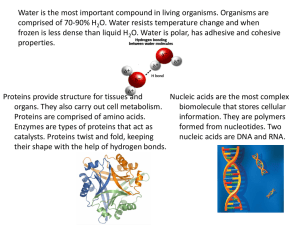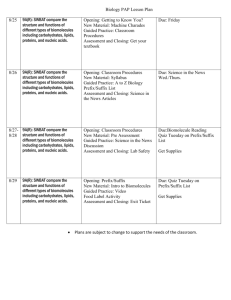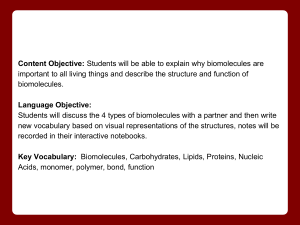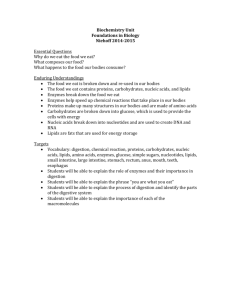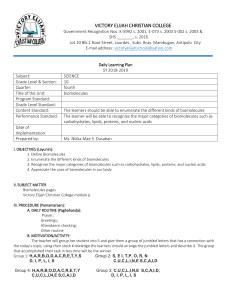1st-LESSON-PLAN-IN-GRADE-10-SCIENCE
advertisement
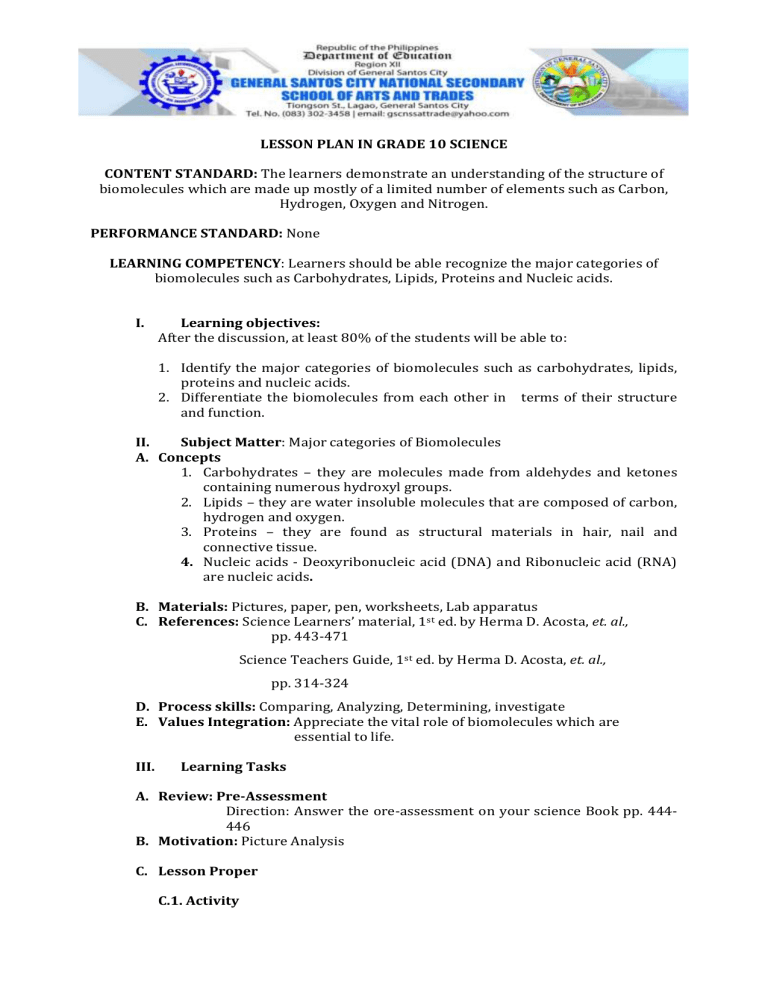
LESSON PLAN IN GRADE 10 SCIENCE CONTENT STANDARD: The learners demonstrate an understanding of the structure of biomolecules which are made up mostly of a limited number of elements such as Carbon, Hydrogen, Oxygen and Nitrogen. PERFORMANCE STANDARD: None LEARNING COMPETENCY: Learners should be able recognize the major categories of biomolecules such as Carbohydrates, Lipids, Proteins and Nucleic acids. I. Learning objectives: After the discussion, at least 80% of the students will be able to: 1. Identify the major categories of biomolecules such as carbohydrates, lipids, proteins and nucleic acids. 2. Differentiate the biomolecules from each other in terms of their structure and function. II. Subject Matter: Major categories of Biomolecules A. Concepts 1. Carbohydrates – they are molecules made from aldehydes and ketones containing numerous hydroxyl groups. 2. Lipids – they are water insoluble molecules that are composed of carbon, hydrogen and oxygen. 3. Proteins – they are found as structural materials in hair, nail and connective tissue. 4. Nucleic acids - Deoxyribonucleic acid (DNA) and Ribonucleic acid (RNA) are nucleic acids. B. Materials: Pictures, paper, pen, worksheets, Lab apparatus C. References: Science Learners’ material, 1st ed. by Herma D. Acosta, et. al., pp. 443-471 Science Teachers Guide, 1st ed. by Herma D. Acosta, et. al., pp. 314-324 D. Process skills: Comparing, Analyzing, Determining, investigate E. Values Integration: Appreciate the vital role of biomolecules which are essential to life. III. Learning Tasks A. Review: Pre-Assessment Direction: Answer the ore-assessment on your science Book pp. 444446 B. Motivation: Picture Analysis C. Lesson Proper C.1. Activity Laboratory Activity Detect the presence of carbohydrates, lipids and proteins in food samples using chemical tests. D. Analysis 1. What did you observe in performing the activity? 2. Did you encounter problems during the activity? E. Abstraction 1. What are the major categories of biomolecules? 2. Differentiate the biomolecules from each other in terms of their structure and function. F. Application 1. What will happen if we take too much or too little supply of glucose? IV. Assessment Identify the words inside the box and place it to the categories of biomolecules where it belongs such as carbohydrates, lipids, proteins and nucleic acids. Carbohydrates V. Lipids Proteins Oils Glycogen Fatty acids DNA Enzymes Starch Glucose Amino acids Cellulose Nucleic acid Steroids Assignments List the food that you will going to eat when you go Home and identify it whether it contains carbohydrates, lipids and proteins.
